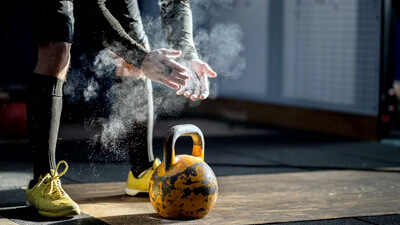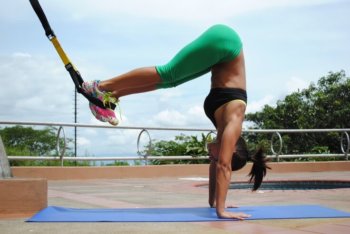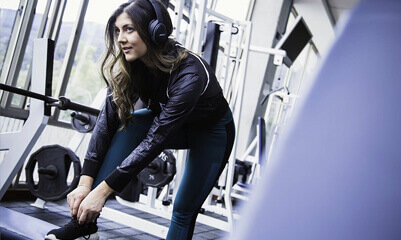Cycling is a suitable activity for people of most fitness levels, and one which also has the advantage of being a viable, environmentally friendly way of traveling around. If you know how to ride a bike, then you have plenty of options for boosting your health and wellbeing, whether by entering cycling races, enjoying some off-road cycling adventures, or simply using cycling as your main mode of transport and commuting.
But just why is cycling such a good form of exercise? There are lots of scientific reasons why cycling is good for your body and your mental health, and here we are going to take a look at some of the most persuasive:
How Cycling Improves Your Mood
When you perform any kind of cardiovascular exercise, blood flow to your brain increases. Blood flow to your muscles increases too, allowing them to perform better, which is effectively what people mean when they talk about ‘warming up’.
Once you are in a state of moderate aerobic exercise, your brain receives more oxygen and nutrients as your circulation improves, and this will leave you feeling more alert and energized.

health benefits of cycling / photo: unsplash.com
This is not the only biological reason why cycling has a positive impact on your mood, however. Going into a state of moderate cardio also causes the release of endorphins and increases serotonin production. These natural parts of your body chemistry are designed to make you feel good, and are the cause of what people refer to as ‘runner’s high’.
Of course, running isn’t something that everybody enjoys, or is at the starting fitness level to comfortably do, nor is it something that is always easy to fit into your daily routine. Cycling is different, because you can easily modify the difficulty to suit your fitness level.
It is very difficult to do it with poor form that could cause injury once you know how to ride a bike, and it is also something you can easily incorporate into your day by using it instead of catching a bus, driving or walking somewhere. Cycling is also something that is suitable for able bodied people of all ages and fitness levels, so even children and senior citizens can get all of its benefits.
This means that when it comes to the mood lifting and brain enhancing effects of moderate cardio, cycling is one of the easiest and best ways for most people to achieve them.

Strength Training for Cyclists at Home
Looking for a strength training for cyclists? Training your body to be at its best when it comes to cycling can be achieved through a combination of targeted exercises.
Cycling as a Low Impact Way to Get Fit
Cycling burns calories, and as a result, when combined with a healthy diet, it can be a good way to stay in shape or to lose weight. Fighting obesity with exercise reduces your risk of all kinds of health complications, including diabetes, stroke, heart and lung problems, and musculoskeletal pain.

Cycling increase cardiovascular fitness / photo: Unsplash
Cycling also engages a lot of muscles, even though it is a type of exercise performed while seated, and can increase lean muscle mass over time. You should find that cycling regularly tones and strengthens the lower body, including the calves, quads and glutes, as well as providing some good core training as you keep yourself balanced while riding and maintain good posture on your bike.
What makes cycling so good for this kind of full body conditioning is that it is very low impact. Unlike jogging or running, it doesn’t cause any significant shock to the joints, so you can safely cycle even if you have existing injuries to the knees, ankles or lower back as part of a rehabilitation program.
It is also a form of exercise where the bike is bearing your weight, and so even if you are very heavy when you start training, you will not be causing dangerous strain to your joints.
Another benefit to the low impact nature of cycling is that it means it is also a safe way to exercise for older people who may have conditions like osteoporosis that make them unsuitable for high impact styles of cardio.
Goals and Competition
Another reason why cycling is a great choice of exercise is that it is one where you can scale your goals up as you progress. Cycling has a low barrier to entry in terms of fitness, and most people can ride a bike on a flat path and experience a good cardio workout and muscle toning exercise from doing so.

Cycling does have an advantage over walking in terms of calorie burn / photo: Unsplash
However, as you become fitter and better at cycling from a technical point of view through practice, you always have the option to up the difficulty and intensity, and the way you do this is entirely up to you.
Some people set goals based on speed, whereas others set them on endurance, for instance entering long distance cycling events. Other people take on trail cycling where skill becomes more important, or simply try and tackle uphill routes that they couldn’t do when they first began.
Because cycling is a very popular activity, there are all kinds of clubs you can join and events you can sign up for if that is what motivates you, but being an outdoor activity that you can also do solo, it is also easy to set your own cycling goals and monitor your own progress.
Goals are really important in psychological terms, as they allow people to focus and stay motivated, and also provide a significant mental reward when a goal is achieved.
With cycling, you can go big and plan to enter a big event like the Tour de France, plan a cycling vacation in a new place you want to see, or even just try and beat your own time record for doing your daily commute, and all of these things will help you get on your bike every time and push yourself to achieve more – helping you also meet your fitness and weight loss goals if you have those.

7 Ways to Make Your Workout Feel Easier
Working out isn’t easy. If it was, it would do no good to your body. Let’s see what you can do to make your workouts seem easier, because the easier they feel, the more you’ll want to keep going during the next session.
However big or small your goals are as you progress with cycling, you get a sense of satisfaction and improved self-esteem when you do not let the fears stop you from pursuing your cycling goals.
Getting Outdoors
Another reason why cycling is psychologically beneficial is that, while you can do some kinds of cycling-based training indoors using stationary bikes, most of the real exercise is done outside.
Getting outdoors, especially in nature, is proven to improve your mood.
The exposure to more daylight helps regulate your melatonin levels, making it easier to maintain a good sleep pattern. You will also produce more vitamin D when you are outside cycling in daylight.

Outdoor cycling decreased stress levels / photo: Unsplash.com
Additionally, while it is not universal, many people do feel calmer when they spend some time outside every day. This can be the case even in urban areas, where it can benefit people to spend some time in a park where they can see some greenery and do some kind of activity (such as cycling), to refresh and energize themselves.
As you can see, there are many benefits to cycling, and while a lot of them do apply to other kinds of outdoor cardiovascular exercise too, cycling is really the only one that is open to as many people, and also doubles as an ecologically friendly means of personal transportation.
Why not consider cycling as your new hobby, and see where it takes you?












